This week’s Keppler’s Vault is about System Cameras, but before we begin, perhaps it would be wise to answer the question, what is a system camera? Is it the same thing as a camera system?
Apparently this question was on everyone’s minds 46 years ago when this article from the December 1974 issue of US Camera was published as the article spends the first two and a half PAGES discussing what the author qualifies as a system camera. Actually, they spend most of that time rambling about what isn’t a system camera. After finally making it to the third page and being more confused than when I started, I’ll TL;DR it for you and say a 35mm camera system is one that has a lot of stuff and is flexible. To those of you who couldn’t believe I wrote a 12,000+ word article on the Argus C3, know that on occasion I can get to the point quickly!
With that rough start out of the way, thankfully the article gets into some serious GAS inducing fun, comparing 6 of the most popular system cameras in a buyer’s guide of sorts. We have the Canon F-1, Minolta XK, Topcon Super DM, Olympus OM-1, and both the Nikon F and F2. The article focuses entirely on the cameras and accessories only. No discussion of the availability of lenses was mentioned, nor was price as if you were a pro, finding a camera that perfectly meets your demands was likely more important than retail cost.
Having shot all of these with the exception of the Topcon, which is close enough to the RE Super that I did shoot, I feel comfortable saying that I am familiar enough with each of these cameras to draw my own parallels to what’s discussed in the article.
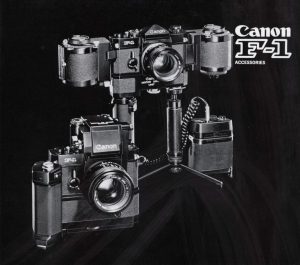
The first area the article looks at when comparing these six cameras is one that is most important to me as well, which is the viewfinder. If you’ve read my site long enough, you’d know that an otherwise excellent camera that produces great photos can be ruined by a crappy viewfinder. Having poor vision means that if a camera doesn’t have a large and bright viewfinder, I’m not likely to come back to it often.
I found it interesting that of the six, the Nikon F was the only one with 100% viewfinder coverage. The F2 was close enough at 98%, but the other four were all under 95% which is surprising considering these cameras were meant for the pro who would want to see absolutely everything captured on film. In terms of brightness, both Nikons and the Olympus scored the highest.
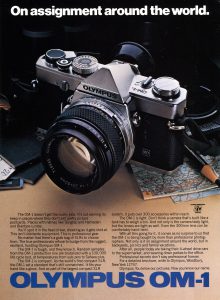
All of the cameras here had a wide variety of accessories and lenses available to them, but in terms of features that would likely have been preferred by pros, the Minolta XK was the only one without both a motor drive or a 250 exposure bulk back, the Olympus OM-1 was the only one without interchangeable viewfinders, and only the F2 and OM-1 had an available data back.
Automatic exposure was available on exactly half the cameras, but in every instance, required some kind of AE accessory meter to be added to the camera externally. None had in body metering and automatic exposure, but that likely wasn’t as big of a con as you might think as most pros at that time preferred to do everything themselves anyway.
The whole article is full of charts and tables going over various features of the six cameras, breaking down each section into discussions about the viewfinder, motor drive, and automation. Although no attempt was made to rank the cameras featured here, if I was new to photography and had never seen any of these six cameras before, simply looking at the availability of features, I would have to pick the Nikon F2 as the winner as it has every feature discussed here, the largest number of viewfinders and focusing screens, the only one with both a 250 and 800 exposure bulk back (actually it was 750), is tied for the fastest motorized exposures per second, and is only one of only two that have an available data back.
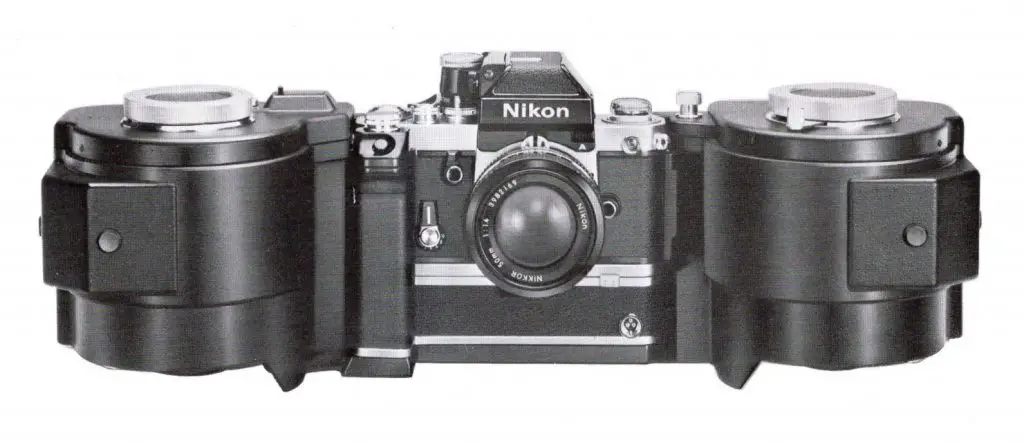
Today, we have the benefit of hindsight to know that in the years to come, neither the Nikon F or the F2 would relinquish their crown as the preferred choice for the professional photographer to any of the four other models here. Nikon’s biggest competitor was themselves with the release of the F3 in 1980 and would not see a serious challenger until Canon’s release of the EOS system in 1986 with their superior auto focus, but still, Bob Nadler was wise not to declare a winner as this article reads more like a Consumer Reports comparison of the six cameras.
As I often say in these multi-camera Keppler’s Vaults, is that back when this article was first published, readers likely salivated at the possibility of owning only one of these cameras, but with the cheap prices classic film gear goes for these days, you can have all six and decide for yourself which one is your favorite!
All scans used with permission by Marc Bergman, 2020.

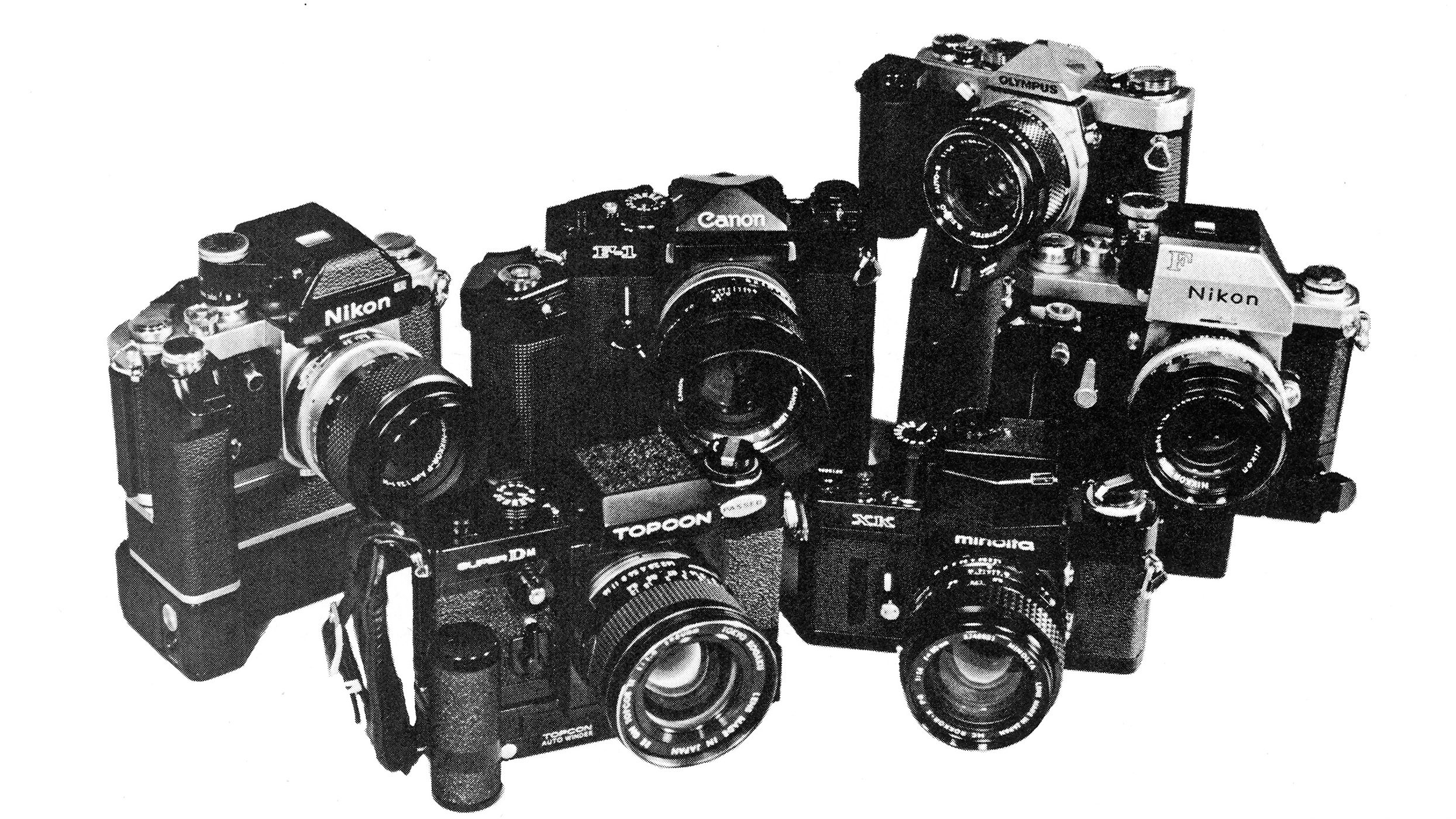
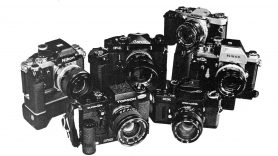
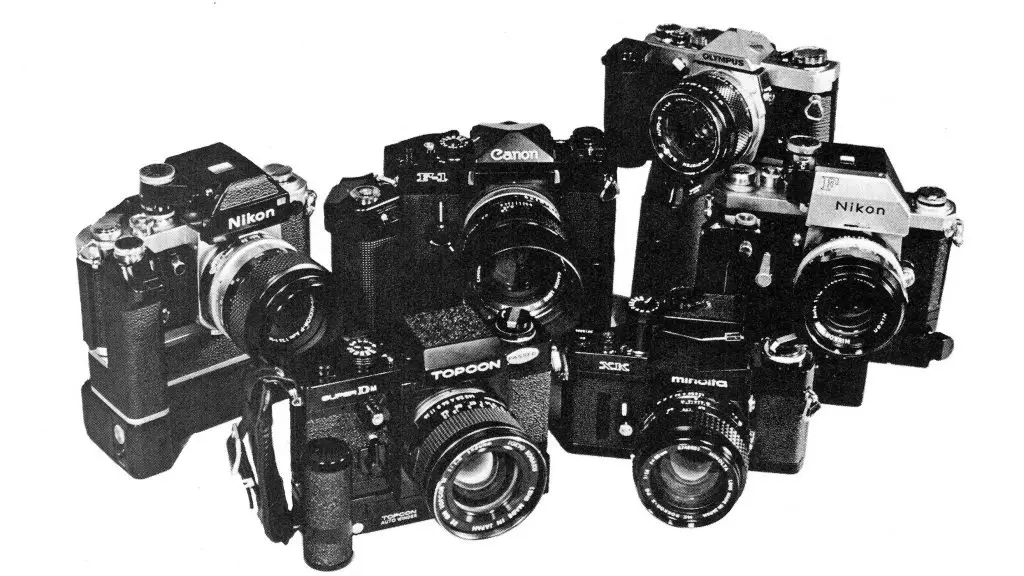
Mike, clearly a somewhat perverse view of what is, or is not, a system camera. But then, if one sets the rules of discussion beforehand, the result can almost be inevitable. I did enoy the part where they discussed the requirements of the assignment to photograph the new sports stadium; this was very funny.
But taking as their basic requirement that a system camera has to have attributes that are unique to the brand, there is one system that is unique, but was too old to have been considered at the time of the article, but I’m sure would have been dismissed anyway on other grounds. I’m referring to the Leica M, and its ability to be both a rangefinder and an slr by the simple expedient of the Visoflex and bellows combo. Now, due to the patent on the M mount at that time we can include all the lenses. For conventional focusing (and true macro shooting) there is the 65mm Elmar through to the Telyts, and for anything wider, revert back to r/f use.
Naturally, the system would have been disqualified on various points: no 250 exposure or 100ft backs, no fast motordrive, no interchangeable screens nor v/fs, but no other camera can successfully be a r/f and an slr. I am aware that Zeiss had a similar facility, especially for their 180mm Olympic Sonnar, but they never succesfully developed it further.
So there you have it, my recommendation, likely to be controversial, for the only true system camera, or two.
And the viewfinder on the Leicaflex beats them all. But no system there.
Many of the reasons so many of us used Nikons…(plus a constant lens mount)
You did not include the Daddy of all system SLRs – the Praktina, which was on the market at least 5 years ahead of the Nikon and all the rest.
You’re definitely not wrong, as the Praktina had a wonderful system, and one that I am a big fan of. But in terms of forgetting about it in the article, you’ll need a time machine to go back to 1974 when this article was originally written! 🙂